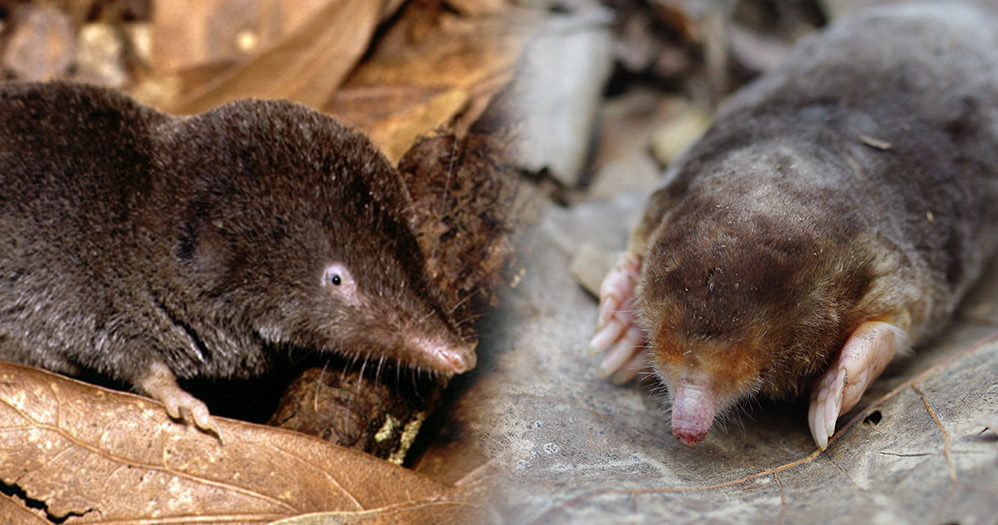Species Portrait: Shrews and the Eastern Mole
9/20/2018 2:21:03 PM
From MDWFP

Shrews and moles are small mammals found commonly throughout Mississippi. Although often mistaken for rodents, moles and shrews are actually in a different primitive order of mammals, which can be traced back to the time of the dinosaurs and also includes hedgehogs.
Shrews (Southeastern Shrew, Southern Short-tailed Shrew, and the Least Shrew)
Mississippi has three species of shrews: Southeastern Shrew, Southern Short-tailed Shrew, and Least Shrew. All three species are small, measuring less than four inches in length, including their short tail, and weigh only about one-third of an ounce. Found throughout Mississippi, they are generally gray or brown and have tiny eyes and ears.
Shrews can be found in a variety of habitats, from woodlands to suburban lawns and flowerbeds. These small, active mammals are not often seen because they spend much of their time scurrying through leaf litter or other ground cover searching for food. They often travel underground through burrows constructed by other mammals such as moles and voles.
Shrews eat a variety of invertebrates (earthworms, slugs, snails, a wide variety of insects, centipedes, and millipedes) as well as the occasional small vertebrate animal (small lizards, frogs, or snakes). They are well known for their voracious appetites. Because of their high metabolic rate, shrews can eat more than their body weight each day and, if deprived of food, can starve in a few hours.
Because of their small size and high metabolic rate, shrews live fast, short lives; most live about a year, with a maximum longevity of around two years. Shrews can be an important prey item for some small carnivores. Owls are a primary predator of shrews, but hawks, small mammalian carnivores, and even snakes also prey on them.
Eastern Mole
There are 42-mole species worldwide and seven species in North America. Only the Eastern Mole is found in Mississippi. Eastern Moles are much bigger than shrews, about 6 inches in total length, and they can weigh up to about four ounces. The mole is highly specialized for burrowing and living underground. Its body is stout but streamlined. Its front legs are short but very powerful, and its forefeet, tipped with long, strong claws at the end of each toe, are very large and shovel-shaped for digging.
They spend so much time underground that they do not need eyes. The eyes of the Eastern Mole are extremely small and covered with skin. The external ears are also small, although the internal ears are still functional. The senses of smell and touch are well developed in moles and are important for finding food and navigating through their underground tunnel systems. The Eastern Mole can be found in a variety of habitats, both open and wooded. In general, they like moist, loose, or sandy soils, but they can also be found in dry, sandy soil if it is suitable for burrowing. Moles can dig two kinds of tunnels: deep, more permanent tunnels that are 6 to 10 inches below the surface and shallow tunnels that can leave a visible “ridge” on the ground’s surface.
Moles eat a variety of invertebrate animals, with earthworms making up a significant proportion of the diet. They also eat insect larvae that they find underground, as well as other invertebrates. Moles, like shrews, also have a high metabolic rate and a voracious appetite. They can consume up to 50 percent of their body weight in food daily.
Moles are known to live at least three years in the wild. Predation on moles is relatively rare compared to many other small mammals because so much of their time is spent underground. However, snakes, birds of prey, and a variety of mammalian carnivores will feed on moles when given the chance.
Scott Peyton is Collections Manager at MDWFP’s Mississippi Museum of Natural Science.



